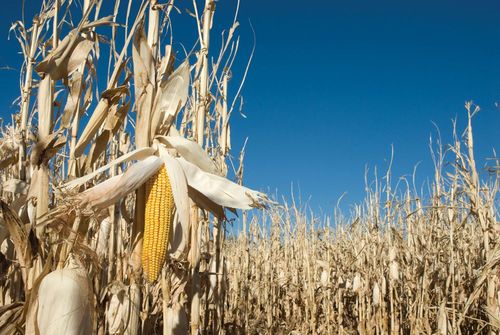USDA maintains 2023-’24 forecast for corn use in ethanol

July 12, 2023
BY Erin Krueger
The USDA maintained its forecast for 2023-’24 corn use in ethanol in its latest World Agricultural Supply and Demand Estimates report, released July 12. The agency, however, reduced its estimate for 2022-’23 corn use in ethanol.
According to USDA, the 2023-’24 corn outlook is for fractionally higher supplies and ending stocks.
Corn beginning stocks are lowered 50 million bushels, as greater feed and residual use for 2022-’23 more than offsets reductions for corn used in ethanol and exports.
Advertisement
Advertisement
The USDA currently predicts 5.3 billion bushels of corn will go to fuel ethanol production for 2023-’24, a forecast maintained from the June WASDE. The agency reduced its estimate for 2022-’23 corn use in ethanol to 5.225 billion bushels, down from the June estimate of 5.25 billion bushels. Corn use for fuel ethanol production was at 5.326 billion bushels for 2021-’22.
Corn production for 2023-’24 is forecast up 55 million bushels as greater planted and harvested area from the June 30 Acreage report is partially offset by a 4-bushel reduction in yield to 177.5 bushels per acre.
The USDA said data from the National Centers for Environmental Information indicates that harvested-area-weighted June precipitation data for the major Corn Belt states represented an extreme downward deviation from average. However, timely rainfall and cooler than normal temperatures for some of the driest parts of the Corn Belt during early July is expected to moderate the impact of June weather. For much of the crop, the critical pollination period will be in the coming weeks, according to the agency.
Advertisement
Advertisement
With supply rising fractionally and use unchanged, ending stocks are up 5 million bushels. The season-average farm price received by producers is unchanged at $4.80 per bushel.
Globally, the USDA said foreign corn production is fractionally higher with area increases for Canada and Ukraine that are partially offset by an area reduction for the EU. For 2022-‘23, corn production is raised for Brazil but lowered for Argentina based on harvest results to date.
Major global trade changes for 2023-‘24 include larger corn exports for Ukraine, with greater imports for the EU. For 2022-‘23 corn exports are higher for Brazil but are lowered for Argentina for the local marketing year beginning March 2023. Corn exports are also raised for Ukraine, Russia, and the EU but reduced for the U.S. and India. Foreign corn ending stocks are virtually unchanged relative to last month. Global corn stocks, at 314.1 million tons, are up 100,000 tons.
Related Stories
The USDA significantly increased its estimate for 2025-’26 soybean oil use in biofuel production in its latest World Agricultural Supply and Demand Estimates report, released July 11. The outlook for soybean production was revised down.
U.S. fuel ethanol capacity fell slightly in April, while biodiesel and renewable diesel capacity held steady, according to data released by the U.S. EIA on June 30. Feedstock consumption was down when compared to the previous month.
The U.S. EPA on July 8 hosted virtual public hearing to gather input on the agency’s recently released proposed rule to set 2026 and 2027 RFS RVOs. Members of the biofuel industry were among those to offer testimony during the event.
The USDA’s Risk Management Agency is implementing multiple changes to the Camelina pilot insurance program for the 2026 and succeeding crop years. The changes will expand coverage options and provide greater flexibility for producers.
The USDA’s National Agricultural Statistics Service on June 30 released its annual Acreage report, estimating that 83.4 million acres of soybeans have been planted in the U.S. this year, down 4% when compared to 2024.
Upcoming Events










